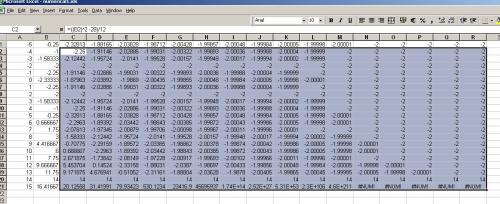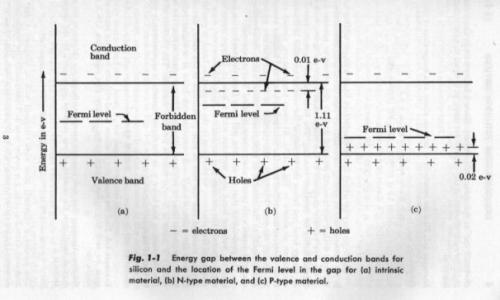-
Posts
18270 -
Joined
-
Last visited
-
Days Won
104
Content Type
Profiles
Forums
Events
Everything posted by studiot
-
A graduate introduction..... ???? Have you studied linear algebra and in particular do you know what a basis is ?
-
1) Exactly why I think this subject needs a good airing, rather than attracting ridicule. 2) So perhaps you would be kind enough to suggest a better or improved one.
-
I am not a cosmologist, and have little interest in it. The introduction Minkowski spacetime as a theory predates the big bang as a theory by several decades and I think that the introductuion of the big bang requires severe modification to MST if not something else entirely. There is an interesting mathematical point to be made here. Much of mathematics is based on collecting together into sets objects, points, 'events' or whatever that have common properties. That is what a manifold is. A set or collection of points with a specific list of (mathematical) properties. Two properties are desirable for such sets because then we can do extensive mathematics on them 1) The set contains all points with the particular property list. 2) The mathematical processes we employ (functions, transformations operations whatever) connect one member of the set to another member of the set. They do not take us outside the set. So adding 3 to 4 produces 7, another number in the set. It does not produce a triangle Processes which lead to a result that is not a point in the set are called singularities (amongst other things). Processess which involve the conjunction of an infinite number of points sometimes lead to a result that is not a member of the set. For instance Fourier analysis applies to continuous functions in linear analysis, and a fintite combination will always produce another continuous function. But it is possible to construct discontinuous functions with an infinite number of points. So perhaps the big bang is not a valid member (point) of Minkowski spacetime.
-
Sorry, John, I thought that this was all part of my answer that I am not designing any sort of controller so don't need to consider alternatives. That does not mean others are not designing such a system (it is after all the logical next step from datalogging and parameter setting) and my query wonders how folks would react if they met one in a bar.
-
You can declare any point in the manifold 'zero', but it is arbitrary, just as declaring 0o longitude to pass through London is arbitrary and Hawaii would have done. This brings up another important point. About the word curvature. Using the 3D formula I quoted above, all the distance lines between any two points A and B remain in the manifold. That is they do not pass through points not in the manifold on their 'way' from A to B. If we consider our manifold to be the 2D (surface of the ) sphere with coordinate lines of latitude and longitude then lines, generated by the 3D formula, between points A and B on this surface pass through points not in the 2D manifold. For this to happen we say that the 2D manifold is curved in 3D space and embedded in it. The alternative is to use more complicated spherical trigonometry (or worse) formulae which keep all lines within the manifold. This is the reason why we need more complicated formulae when we want to discuss the physics of the 4D manifold - we do not want the embedding in a yet higher dimension.
-
Thank you all, lots of thoughts and meat for discussion. My answers to the specific questions, sorry if I've missed one, please point it out. No I am not designing a Windows or any other gas boiler controller. The only experience I have is a Windows operated data logger for a large commercial office. This has no controlling functions for the boiler, but can set or change parameters in the boiler's hardware contoller. The last non functioning ATMs I saw were outside the Cydesdale Bank in Dundee, earlier this year. But I agree they are generally pretty reliable. Studio T does, however maintain embedded Windows POS (point of sale) units in some large commercial operations. These are substantially more reliable than the 'secure' Windows networks in those same organisations. (Windows server domains and pro workstations). They are not as reliable as ATM units though, producing system errors that require rebooting to clear.
-
All of these questions can be answered by understanding what is meant by the '4D distance' Unlike 3D distance the 4D distance has components that add to it and components that subtract from it. In 3D the distance (also called the metric) is given by (d2 - d1)2 = (x 2- x1)2 + (y2-y1)2 + (z2- z1)2 The things to notice here are that because they are all squares they are all positive and that all the components are added together. So any component value at all will contibute to increasing the distance. In the 4D spactime manifold this is not the case. The distance, now denoted by s, is given by (s2 - s1)2 = (x 2- x1)2 + (y2-y1)2 + (z2- z1)2 - c2(t2- t1)2 There is now a term that can subtract from the overal value of distance so a large contribution from the additive components can be offset by a large contribution from the subtractive one and vice versa. Note that this is the standard metric for this work in special relativity, but there are other more complicated ones available that are used in general relativity.
-
So my Windows just bluescreened again. What would have happened if it was supposed to be controlling the safety interlocks on the boiler?
-
The title says it all. Let the discussion commence.
-
I'm glad you found this helpful. It seems to be the season for starting numerical methods courses. See here for information about some of the other numerical topics you listed. http://mathhelpforum.com/higher-math/252777-approximation-function-vs-interpolation-function.html and here http://mymathforum.com/math/252860-square-root.html The point about the spreadsheet is that it provides a quick and easy way to play with formulae. Another (teaching) webiste for this is https://www.geogebra.org/ This allows graphics, formulae and spreadsheets very simply and is open source which means it is freeware. I cannot tell you everything in one single post but I do ask a few questions designed to lead to the next one so please answer them if you can. Your example can demonstrate considerably more about the important points in numerical methods, if you wish to continue. The standard quadratic equation formula (which we are not supposed to be discussing here) works perfectly well for complex solutions. It's just that the solutions are well, complex numbers.
-
First, and I cannot stress the importance of this enough. You have exact solutions in this case. Numerical methods are all about the real world. In the real world your equation is likely to be presented something like 1.0057X2 - 11.993725689X - 28.000000007 = 0 and you are not sure about the last few digits of any of the coefficients. This is where you will use numerical methods to get not an exact answer but an answer that is good enough. Back to the example, please note that this forum allows the use of superscript and subscript (you will find them on the second row of the toolbar) to better present mathematics. Your equation is 1X2 - 12X- 28 = 0 rearrange 12X = X2 -28 X = (X2 -28) / 12 Now look back at the formula I presented in post 2 We have a formula for X, but it is in terms of X. If we take a 'guess' for X and insert it into this formula we can calculate another value of X. If we take this new value of X and insert it into the formula we can calculate yet another value for X and so on. The hope is that each 'iteration' (=approximation) will get better than the last and the calculations will converge on the correct answer. That is why this is called the recursiv.e or iterative method. I have shown the results of doing this in the spreadsheet. Have you any experience with spreadsheets?
-
I am guessing you have just started a course in numerical methods and have found it all very different from anything you have seen before? You are right to try to find examples where you can compare results with what you can find by other methods. Other methods usually mean what are known as closed form solution that you can extract a formula which will give you the 'absolutely' correct answer. But even then working this out may take more effort than finding the answer by a numerical proceedure.Y You have provided an example, how about we work through my solution, picking out the essential points of numerical methods, as I suggested above?H Have you found the two solutions to your quadratic by formula?
-
I don't know what you don't understand about numerical methods, you will need to explain further. Which methods? Here is a spreadsheet showing the effect of a recursive numerical method using the formula [math]{X_{n + 1}} = \frac{1}{{12}}\left( {X_n^2 - 28} \right)[/math] seeding the Xn from -5 to +15. As can be seen this rapidly converges on the -2 solution, but not on the +14 one.
-

Differences between Mathematics and Physics/Engineering
studiot replied to studiot's topic in Mathematics
The solution of the Schrodinger equation applied to a periodic structure such as a semiconductor lattice leads to a complicated trigonometric equation which has real solutions that work in transistors and imaginary solutions that have no physical impact. For example the simplest approach is the Kronig-Penny model. https://www.google.co.uk/search?hl=en-GB&source=hp&biw=&bih=&q=kronig+penney+model+band+structure&gbv=2&oq=Kronig+Penn&gs_l=heirloom-hp.1.2.0l10.1859.5031.0.6922.11.8.0.3.3.0.281.1515.2-7.7.0....0...1ac.1.34.heirloom-hp..1.10.1640.q8b6bmRKGAY You are probably aware of the technique in elementary physics of 'equating real and imaginary parts and discarding the imaginary results'. There is a particularly clear working of this in Prof Atkins' book, Molecular Quantum Mechanics, p269ff. -
Silicon is a semiconductor and a solid in normal circumstances so passing electric current through it by applying a voltage will not result in ionisation. Edit Actually, to be fair, it is a somewhat disingenuous average to use 0.6 volts as the bandgap (= the forbidden zone) for pure silicon is 1.1 volts. But silicon is usually doped. In the solid state silicon is covalently bonded giant molecule, also called metallic bonding. It does not ionise with the passage of electricity, it merely heats up, through ohmic heating, and eventually melts to liquid silicon comprising covalent molecules or individual silicon atoms, both of which are neutral. Solid state physics and chemistry is fascinating, but you are opening a big subject and adding phase diagrams makes things even bigger. Do you want to proceed?
-

Differences between Mathematics and Physics/Engineering
studiot replied to studiot's topic in Mathematics
Thank you , Keen, for your thoughts. I think you will find that the Tarski fractal decomposition you mention is the principle that lies behind the fact that any piece of a hologram contains the entire image. Playing around with infinities like Cantor's staircase or Peano's space filling curve (do you know that one?) is fun, but they all fit into a solid block just as well as a perfect circle, parabola etc. But keep the thoughts coming, they are interesting. It is also interesting that all the offerings, so far, are for something in mathematics that is not in the physical world. I actually had in mind the other way round. -
Good to acknowledge, when true. +1
-
Hello again DrDoggy, You started this post because you were unsure about ionisation so perhaps we should start at the beginning. Chemists regard molecules as the smallest lumps of matter. Molecules can be single atoms or connected groups of atoms. Normally they are electrically neutral, because although they contain positively and negatively charge sub atomic particles, they contain an equal number of each. Ionisation is the process of creating charged molecules from these neutral ones. This can happen in five ways. This can either be forced or some (unpreventable) natural processes can also cause ionisation Taking away or adding either positive or negative charges accounts for four of these mechanisms. Splitting a molecule into smaller charged molecules offers the fifth. Charged molecules are called ions. Silicon is a semiconductor and a solid in normal circumstances so passing electric current through it by applying a voltage will not result in ionisation. The application of increasing voltage from zero to a bar of silicon will simply show a small current increasing from zero with a roughly parabolic curve, until 0.6 volts habeen reached. At this voltage the current increases dramatically as electrons are promoted to the conduction band. Since electrons are supplied at one terminal of the bar, pass through the silicon in the conduction band and exit through the other terminal, electrons are never actually removed from the silicon atoms, and the semiconductor molecular lattice remains intact and overall neutral. An example of ionisation by applying an electric voltage would be a discharge tube such as a flourescent light fitting. Inside these once the ‘striking voltage’ is applied electrons are stripped from the molecules in the gas in the tube at one terminal and removed. This creates positive ions which migrate towards the other terminal where they receive electrons and return to neutral molecules.
-
Memory Stick was originally a Sony trade mark for additional non voltatile plug in memory in certain Sony video and still camera equipment. It was not compatible with other makes or types of plug in memory. It has become an instance where a particular brand has been taken by the public at large to represent a whole family of products like with Hoover for vacuum cleaner. https://en.wikipedia.org/wiki/Memory_Stick
-
Especially steam gravy trains. Steam is So....o.....oh environmentally friendly (Thanks to David Wardale)
-
Thank you for your summary, DimaMazin +1 It should be noted that your pink parabola from Wiki is not the one we are discussing, although it shows the important features. You do not need to use calculus or algebra to obtain the vertex x coordinate, which is what I meant by saying to use the geometric properties of a parabola. We are assuming an upright parabola, and the coefficient a is positive which means it is concave up, so has a minimum which we want. The x axis is a chord of this parabola, perpendicular to the axis, and any such chord is bisected by a vertical line through the vertex. So the vertex is halfway between the intercepts on the x axis (-2 and +4) ie through x = +1. Substituting this x value into the parabola equation already found does indeed yield y = -27.
-

How fundamental is light to the physics of the universe?
studiot replied to geordief's topic in Relativity
I didn't introduce the question. I did, however, quote the post where the questiion was first posed Did you not read it? I'm not sure about whether the vacuum is important to the poster or not. It could also be that vacuum was mentioned because that is the only place light has velocity c. As to measurement of distance. Two basic methods are recognised. They are respectively called line standards and end standards. My micrometer is an end standard and requires simultaneous access to both ends of the mesureand. No relativity corrections or reference frames are therefore required. Note that large distances are not the only ones we measure, smaller ones are just as important. So I am simply objecting to a blanket statement/question that there is only one means of measurement of length or distance. -

How fundamental is light to the physics of the universe?
studiot replied to geordief's topic in Relativity
I don't see how this answers the question, which by the way was originally confined to measurement in a vacuum This was already answered in my post 15. The floating micrometer i used to measure distance in my first post after leaving school could operate in a vacuum if required. -

Chemical reaction equations vs balancing equations?
studiot replied to TJ McCaustland's topic in Chemistry
These are good question so keep asking them. -
As one who has little or no interest in the subjects you wish to pursue, I offer the following unbiased comment. Personally I have the greatest respect for the moderators here, I am too opinionated be as impartial as they are, even to the extent of applying rules they disagree with. You are obviously the same as I in that respect. But just, for one moment, place yourself in their shoes. How would you treat posters who consistently and perhaps flagrantly ignore the general rules of courtesy or the specific rules of this forum? personally I am too inclined to be rude to them. But our mods manage to moderate with civility. Could you do this? Some throw their toys out of the pram when faced with this situation. Are you adult enough to accept any single member's place in the scheme of things and co-operate this everyone else.? The rewards of doing this are great.




